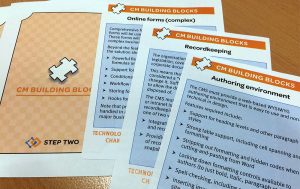Filed under: Content management
Most modern content management systems provide two different ways of editing site content: in-context editing and back-end editing.
While in-context editing is often seen as ‘sexier’, each method has its strengths and weaknesses. This briefing will explore these two editing options, providing advice on when to use them in practice.
In-context editing
In-context editing allows authors to browse the published website, using site navigation in the normal way to find the desired page.
By clicking a small or hidden button (or some other equivalent action), they can switch into editing mode, updating the content of the page in place.
During editing, the author can see how the published page appears, including the formatting of the text. By updating the content ‘in context’, the author can immediately see the finished product, even as changes are being made. Depending on the vendor, this functionality may be called different things, including ‘live site editing’, ‘in place editing’ or ‘surf-to-edit’.
The big advantage of this method is its simplicity. Authors are familiar with the structure of the published site, and comfortable with navigating through it.
By hiding most of the underlying complexity of the CMS, this alllows authors to concentrate on updating the content.
For these reasons, in-context editing is often seen as the more usable authoring option. It is also commonly seen as a more ‘modern’ option for updating the site.
In-context editing is not without weaknesses. The very simplicity of the interfaces makes some tasks harder, or at least, less obvious.
[CM Briefing 2008-04, read the full article]




